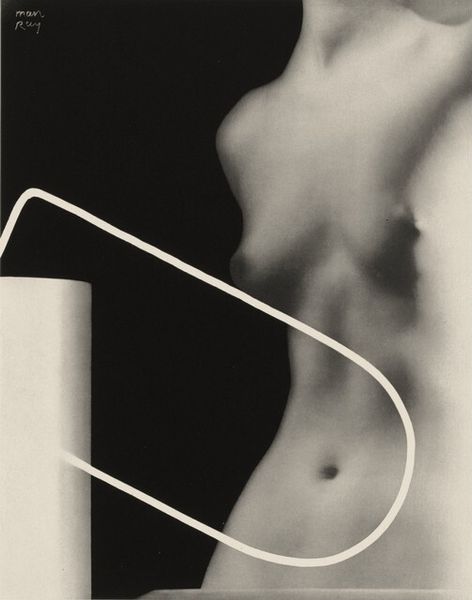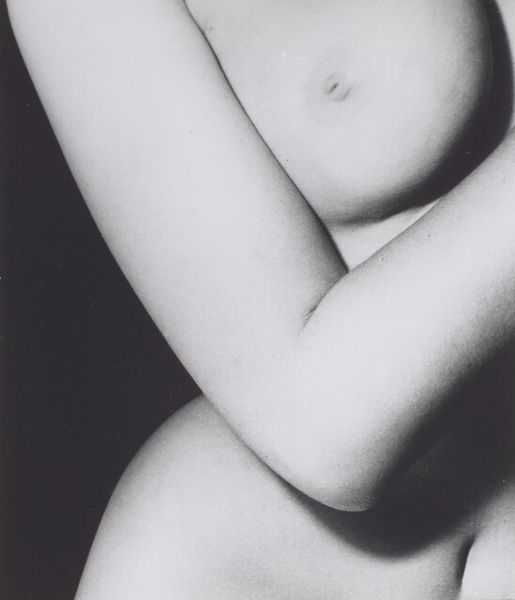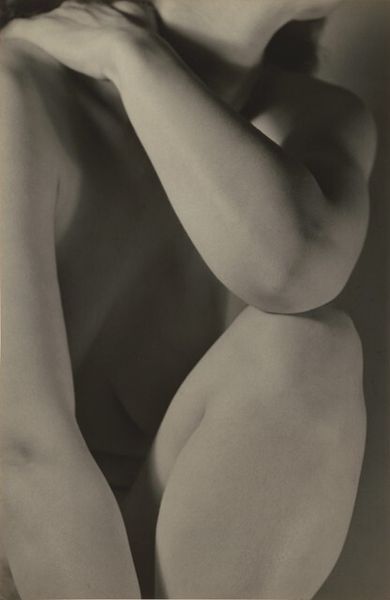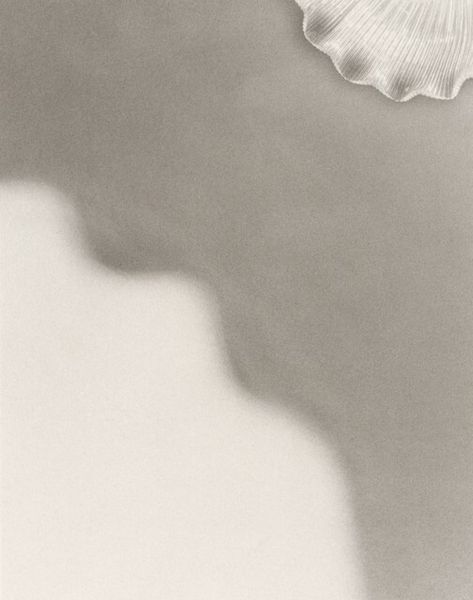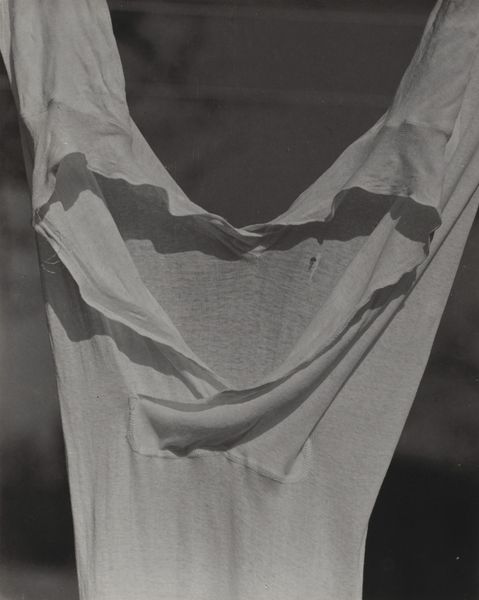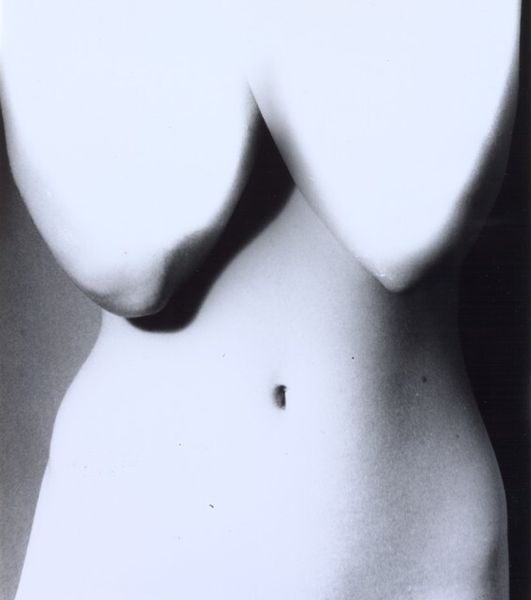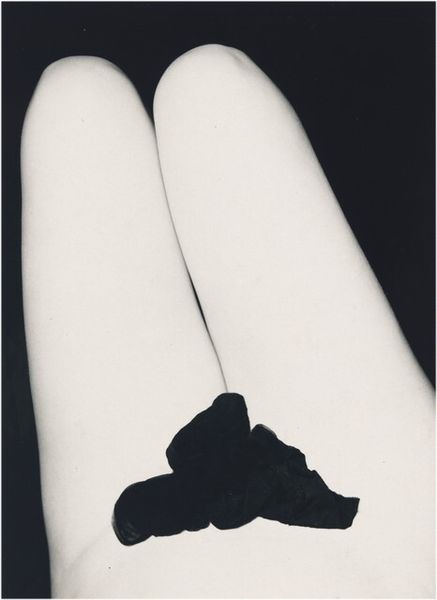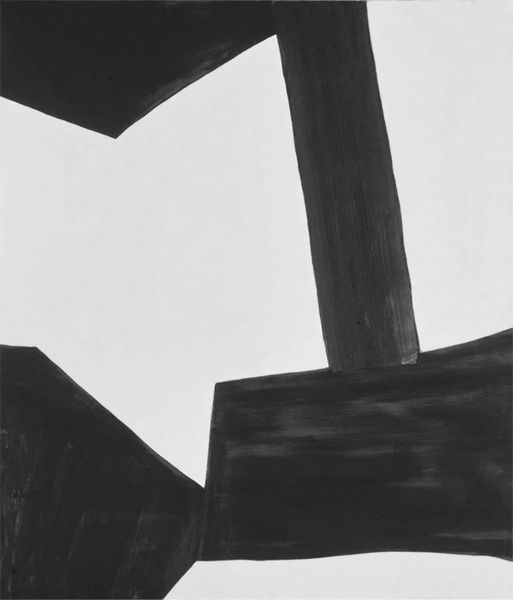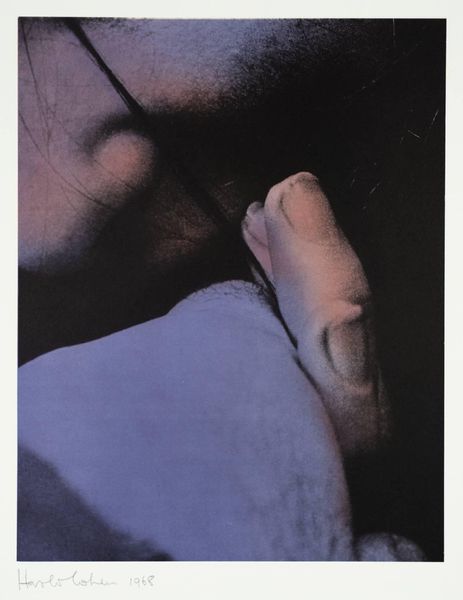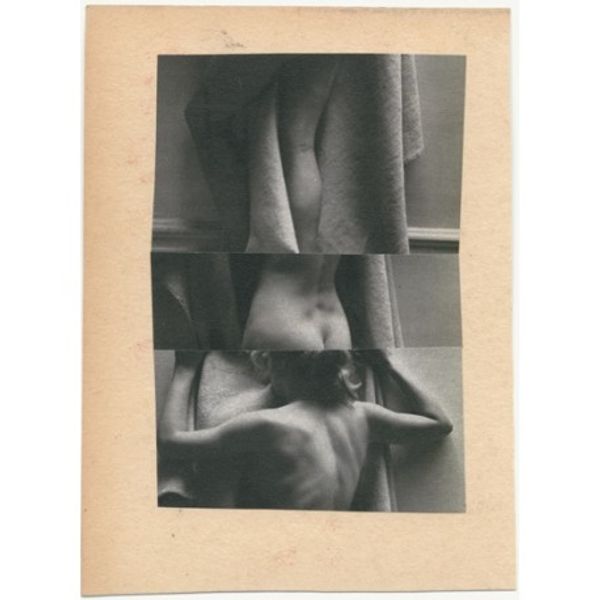
photography, gelatin-silver-print
#
black and white format
#
photography
#
body-art
#
gelatin-silver-print
#
monochrome
#
nude
#
modernism
#
realism
#
monochrome
Dimensions: sheet: 25.2 x 20.3 cm (9 15/16 x 8 in.)
Copyright: National Gallery of Art: CC0 1.0
Editor: This gelatin silver print, "Untitled (Nude)" by Bill Brandt from 1959, has a striking, almost sculptural quality to it. It's so cropped and abstracted; the light emphasizes the form more than the figure. What do you see in this piece? Curator: I see an artist very aware of the socio-economic conditions that allow for artistic production. Brandt's choice of gelatin silver, a relatively accessible material at the time, speaks to a democratization of artistic practice. Think about the labour involved: the darkroom, the developing process... How does this emphasis on process affect our understanding of the final image? Editor: That's a great point! I hadn't considered the labor involved beyond the initial capture. Does the ‘everyday-ness’ of gelatin silver affect how we view the high art status, especially given that nudes are often associated with painting and sculpture? Curator: Exactly. Brandt challenges this hierarchy. By using a commonplace material, he forces us to consider the value we place on art. The cropping too, the deliberate abstraction, what does this mean for the commodification of the female form within the art market? How does this 'realism' function in opposition to, say, high-end glamour photography, and the consumption of those images? Editor: So, it's not just a nude study but a comment on the materials and processes inherent in photographic production and how those intersect with social values. It is almost like the photograph questions the meaning of "high art." Curator: Precisely. Brandt invites us to consider the socio-economic dimensions of artistic creation and reception, opening up new avenues for appreciation. Editor: That reframes the whole image for me. Seeing it as a material investigation as well as a visual one really deepens my understanding. Thanks!
Comments
No comments
Be the first to comment and join the conversation on the ultimate creative platform.

